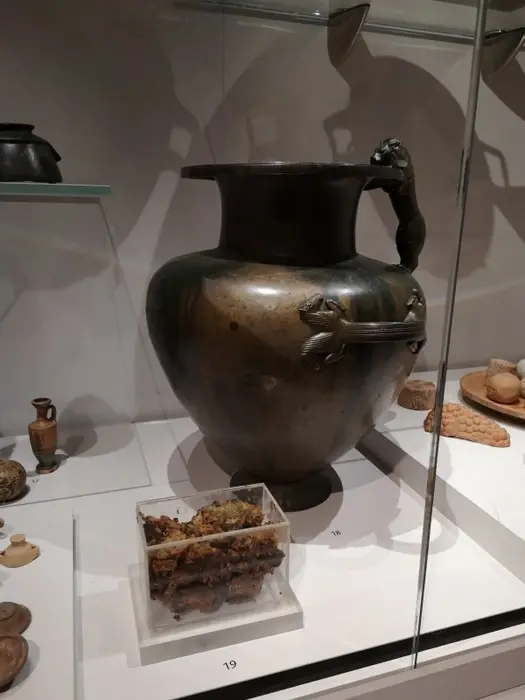A new biomolecular analysis has revealed that the bronze jars buried beneath a Greek temple in southern Italy over 2,500 years ago contained remnants of the world’s oldest ritual .
According to scientists from the University of Oxford, the ancient sanctuary that housed the honey belonged to the Greek colony of Paestum (near modern-day Naples). It was founded in the late 7th century B.C. and was originally named Poseidonia.
Researchers believe this represents a genuine scientific breakthrough that combines the latest advancements in archaeology and chemistry. This discovery sheds new light on ancient Mediterranean rituals and dietary practices, as reported by Arkeonews.
Scientists Achieved What Their Colleagues Could Not 70 Years Ago
In 1954, during excavations at the sanctuary in Paestum, another team of researchers stumbled upon bronze vessels that contained something resembling a sticky waxy paste. Even then, scientists suspected it might be honey—an offering to the gods. However, 70 years ago, they were unable to prove it. Only now have scientists been able to confirm this hypothesis thanks to cutting-edge analytical technologies. Researchers re-examined the contents of the jars, which had been preserved at the Ashmolean Museum of Art and Archaeology at the University of Oxford all this time.

Using advanced mass spectrometry, infrared spectroscopy, and proteomic analysis, the team led by Luciana da Costa Carvalho and James McCallum identified hexose sugars, royal jelly proteins, and other biomarkers associated with Apis mellifera—the Western honeybee—in the vessels.
The multi-analytical approach also helped researchers discover:
- compounds formed during the breakdown of saccharides, such as 5-methylfurfural;
- the acidic chemical profile of ancient honey and beeswax degradation;
- copper and sugar compounds formed from the interaction of honey with the bronze vessels.
Scientists compared the ancient remnants with modern samples of beeswax, honey, and honeycombs from and . The chemical composition of the 6th-century B.C. substance matched that of contemporary bee activity samples.
“This is not just culinary waste; it’s a biochemical time capsule. We have found molecular evidence supporting the initial hypothesis. These vessels once contained real honey. The discovery of honey changes our understanding of the ritual practices of the ancient Mediterranean,” noted Dr. da Costa Carvalho.
Honey: A Sacred Symbol of the Ancient World
For ancient civilizations, honey was more than just a delicacy. In Greek mythology, it symbolized immortality and divine sustenance. It was believed to be the food that nourished Zeus when he was an infant.
The fact that honey was sealed in jars and buried beneath an inaccessible sanctuary led researchers to speculate that it was likely a ritual offering.
In this sanctuary, scientists also discovered an empty iron bed: this finding also hints at certain ceremonial practices.
Why Is This Research Important?
The team’s discovery is significant not only for identifying ancient ritual honey but also for the innovative analytical methods employed.
It was these progressive technologies that enabled scientists to distinguish honey from other possible substances that previous researchers had suspected might be present in the jars (such as animal fats, resins, or oils).
This discovery will serve as a starting point for future studies of ancient substances, particularly museum that have long evaded examination.
The results of the study were published in the Journal of the American Chemical Society.
